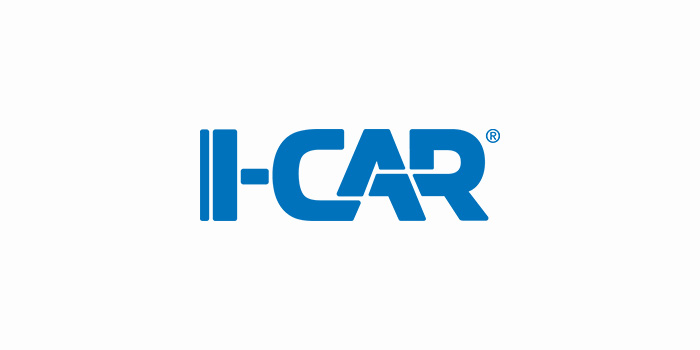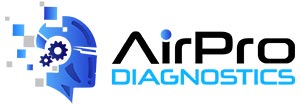 We’re thinking of adding aluminum repair to our shop, which means buying an expensive set of aluminum-only tools. How hard is it to add this to an existing shop regarding the ‘clean’ area? Do I need a special booth? Because I really don’t have any extra space.”— Melissa Takamatsu, Epps Body & Paint, Bee Cave, Texas
We’re thinking of adding aluminum repair to our shop, which means buying an expensive set of aluminum-only tools. How hard is it to add this to an existing shop regarding the ‘clean’ area? Do I need a special booth? Because I really don’t have any extra space.”— Melissa Takamatsu, Epps Body & Paint, Bee Cave, Texas
Question answered by: Mitch Becker, technical instructor for ABRA Auto Body & Glass
When I was asked to put together an article about what collision repairers need to get started in aluminum repair, I thought I could do that in my sleep. Then, I started thinking about all the resistance repairers are having to aluminum.
Two Choices
I hear all the time about the cost of equipment and training: “I would have to fix X amount of Ford trucks to recoup my cost of equipment.” It’s hard to convince some people how shortsighted that comment is. Honestly in my opinion, you had a choice – the key word being “had.” With Ford’s jump into building mainstream vehicles out of aluminum and other manufacturers either increasing their use of aluminum or following Ford and going full throttle, you’re faced with two choices for your shop and employees:
- You can choose to move forward into aluminum repair.
- You can choose not to do aluminum repair and specialize in the repair of steel-only vehicles.
The first choice costs money but opens the door to fixing many or all models of cars and provides a huge revenue base of other repair possibilities, including creating repair work instead of just R&I, making a technician and shop money while lowering repair costs, much like a frame rack did when shops decided to get into frame repair.
With the second choice, you’re making a stand and saving yourself money. The revenue lost to other shops because of shop’s inability to repair aluminum will have to be made up somewhere. Telling a 20-year customer that your shop does not have the ability to repair some parts of their vehicle will be a bitter pill to swallow.
I know, you can replace these parts without special equipment. But that will create other issues for cost to whomever pays, including cash jobs, but I am not going to get into the time and labor issue in this article. Hiring technicians could also be a challenge, which I will explain later on in this article.
Attitude Adjustment
When you go into any project with a picture in your head of somebody twisting your arm, it will be a long and painful process every day. If this is your attitude about the changes occurring in this industry, whether you want them to or not, this article will not help alleviate your frustration. If you accept the challenge to make your shop better and want to move with changes, then get ready. The start of training and equipment purchased will move you into what you need for the changes now and in the future to come. If your attitude indicates that you’re not into this, your shop will feel this too and the change will be hard for all. Be positive!
Have a Plan
Have a meeting with all of your personnel and let them know that changes are coming and why. Let them know you need to hear their ideas, not opinions. Many great ideas come from within. You may learn about how much they have thought about this. They may have some great ideas at saving on costs.
You also need their buy-in. This project will need to be a change, not just on some types of repairs but your shop environment, diligence in proper procedures and maintaining new equipment. Communication and expectations for all will be a big part of getting started.
I have also learned over the years I’ve trained that this process generates some excitement in shops. Technicians start looking at new equipment or more repair possibilities and can see that the future could be much brighter. Again, it’s all in your attitude and how you approach it. A shop that has the right equipment and attitude is also much more attractive to new employees and is more likely to retain current employees.
Training
This is a special message to shop owners and managers: take the training on aluminum. To make an informed decision on how to progress, you need to know the “why.” Every person needs to be on the same page. I can’t tell you how many times I’ve taught classes and heard attendees say, “I wish my boss was here.” This disconnect has a huge effect on how a shop progresses. The training will help so much to know why certain things are done or needed. By taking classes with your techs, it becomes a team approach. I promise you it will make all your jobs easier.
Start now! Taking training classes such as I-CAR ALI01 or any other aluminum training classes will allow you to see equipment and procedures. Start by listening, not judging and wishing you were somewhere else. The training will help you to see where you are and what you need to achieve your shop’s goals.
Equipment
What do you want to do? How extensive do you want to be? If you want to be a Jaguar-certified shop, then you need to read a different article. If you want to be able to work on aluminum or have the equipment needed to repair the mainstream aluminum, you may need to buy some equipment. This is assuming you don’t already have the capability. You may be surprised at how much equipment you already have. You may also have a shop or technician who has much of the needed training and tools.
Space
In training, you’ll learn why aluminum repair and steel repairs need to be kept separate. Cross contamination can cause a lot of quality issues. Starting right and preventing issues will go a long way toward keeping everyone’s blood pressure lower.
You do not need a separate room or building, mainly just an area you can do repairs in. If one of those repairs is aluminum, you’ll need something like a curtain wall to separate it.
Clean the repair area to get rid of any steel contaminates and bring in the aluminum part or vehicle. Close the curtain. When done, clean the area of all aluminum contaminants, open the curtain and pull in the next vehicle to be repaired. The curtain wall or separated area is only needed when you have aluminum repairs. Also, you can fix any vehicle in this area – it is not necessary to designate it as “aluminum only.” Therefore, you will not lose a production area unless you’re going for particular manufacturer qualifications.
Enclosed Workspace
Air movement is an issue in this area. Fumes from welding and dust from working will create a hazardous environment. Fans should not be used as they’ll blow contaminates around and make welding difficult if they blow shielding gas on a welder. Envisioning a prep station environment would help you to understand your needs. Make sure all of this equipment meets OSHA requirements. If you can’t achieve this environment, a fume extractor may be needed. An explosion-proof vacuum is also needed to collect aluminum particles from repair procedures, as using compressed air to clean is a bad idea.
Dust and aluminum particles can also be controlled by using a wet mix vacuum or dust system. This can be a great item to protect technicians and the shop along with controlling quality when working in enclosed areas. I know this is a big expense for shops, but for OSHA requirements, check your laws and options.
Hand Tools
A shop or technician will need a set of basic tools for aluminum repair. These tools should be marked and stored separately from tools used for steel cars to prevent cross contamination. I’ve priced out every tool needed as shown on a manufacturer’s list from Sears.com (which is a major supplier of tools to the aircraft repair industry), and brand new, they list from $800 to $2,000, depending on quantity and brand name. In a shop, the cost will actually be lower as many shops already have these tools.
For a list of tools, you can reference any aluminum repair program’s requirements online. Keep in mind that some certifications have required specialty tools added to their list.
Self Piercing Rivet Gun (SPR)
This is a tough one as there’s lots of confusion due to the fact that there’s a number of these on the market. Why is one better than the other? I’ve asked that question and gotten a lot of different answers.
Each vehicle manufacturer has different recommendations. Can they be used on vehicles that call for a different gun manufacturer? I’m not an engineer, so I’m going to follow the vehicle manufacturer’s advice and say no. Pressure required, rivet size, material being riveted – all these are considerations for the right tool. For some certifications, a specific brand is required. I wish I had a better answer than this. Be warned that these tools are expensive and portable, so engrave your shop name and number on them in case they get lost or stolen.
Dent Repair
There are many options in the dent repair universe, so pricing out for capabilities is important. The equipment is similar to steel but designed exclusively for aluminum. A non-contact thermometer and a file belt sander should be included here. A good heat gun along with a good supply of aluminum nails for a dent puller are a must and should be kept for an aluminum kit. This will be a big expense, but it will make you money quickly as you’ll be able to repair a great deal of what is currently being replaced.
Look at the costs versus the capabilities. Some kits come with hand tools included, so avoid doubling up of the hand tools purchased. The hammers of one company have heads that spin off to convert to hammers and dollies as needed. Knowing this can save you money.
Do you need a built-in panel holder? Look at your carts and see if you really need to have all the gizmos, which are cool and can make some things easier. Many times, you already have what you need. Gizmos do cost more, but some include welders.
Welders
I saved the best for last. The welders recommended for aluminum happen to be, in many cases, the best welders available for steel. They may also be able to MIG braze. MIG brazing may be required for many new models of vehicles to replace quarter panels and roofs (see Honda quarter panel replacement). The reality is you’re buying a welder that will be able to repair all the previous vehicles and anything new for years to come. There is one GMAW welder that can MIG weld or TIG weld aluminum, MIG weld or MAG weld steel, silicon bronze or MIG braze steel and arc weld.
You can buy a welder that does it all or just MIG welds aluminum. It’s your choice as far as capability and price. You do not have to break the bank on this purchase. These last paragraphs need to be read by all. Welding on steel has changed as well and many shops don’t know what certain types of steels require. Many require a welder capable of 200 amps for welding on steel, and most of the welders currently in shops can’t do that. The welders being recommended are also 220-volt welders, not 110 volt. Most shops spend thousands of dollars replacing welders that wear out every year, and many don’t last that long. The new welders being recommended are more suited for industrial applications versus collision. They may cost more, but they have a much needed difference in capability and durability. The ease of use of these welders also makes a welcomed difference in shops. The learning curve is greatly reduced, making these welders productive right out of the box. With the right equipment, training to weld on aluminum can be very quick.
These welders are the recommended pulse/spray arc welders, which are the capabilities recommended or even required by vehicle manufacturers. You do not need a specific brand or model number, just the proper capabilities. You can choose from many companies that currently have multiple models at prices to match your budget. Converting a welder to a spool gun may not serve your needs.
Options
Frame equipment is a gray area for most. Although not required, attaching an aluminum body to your frame rack for pulling an aluminum structure does need to be considered if you’re going to work on some vehicles. This question needs to be answered by your frame equipment supplier. Cost and capability needs to be considered here, too. Is there a rental option for non-mainstream vehicles? That’s for another article another time.
Capability
A shop for the most part needs to have the capability, not necessarily an exact brand or model of equipment, for many certified shop approvals. You just need the capability of doing repairs correctly. With all the choices now available and coming along with pricing options, you decide how to get there.
You need:
- Space to separate
- Safe, enclosed workspace
- Hand tools
- SPR
- Dent removal
- Welder
- Frame adapters for holding aluminum and measuring
I could write an article on each one of these, but then it would take up the whole BodyShop Business magazine. Your shop or team is one of the best starting references to accomplish this project. Never miss a good opportunity to listen.













